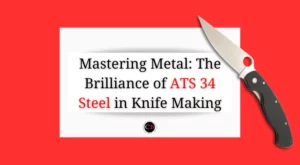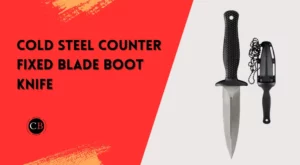If you’ve ever heard of BUSSE knives or even own one, you probably know that the Busse Combat company makes some pretty typical knives. One of these knives, a combat knife, is made of SR101 steel, so I asked myself again, what is SR101 steel exactly?
Is SR101 steel good for knvies? What is its chemical composition? How hard is it? And questions like that.
I have tried to gather as much information as possible. Stay tuned, below I’ll try to answer the usual questions to give a rough overview of this steel!
Table of Contents
What is SR101 steel?
SR101 steel is a modification of the AISI 52100 steel made by Busse Combat Knives. The actual composition is slightly outside the strict AISI 52100 steel specifications. This is nothing unusual, many steel manufacturers move slightly outside the tight specification. However, not enough to warrant a new specification either. Other than that, the performance reports are very positive. The SR101 steel is mainly used for knives and swords.
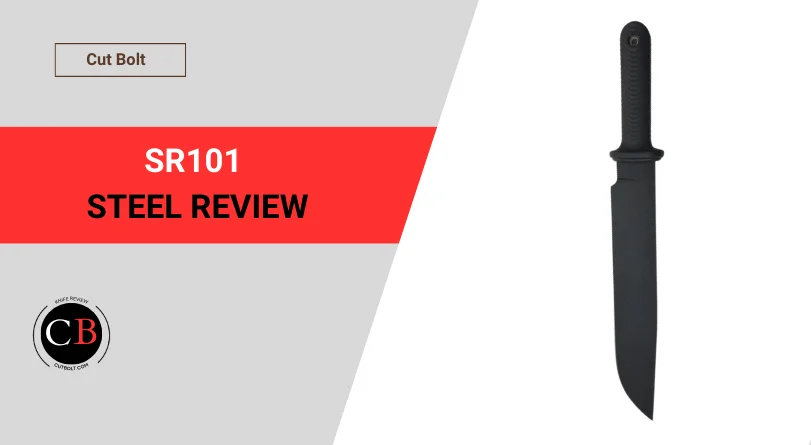
Chemical composition of SR101 steel
| Element | Portion | Effect |
| Chromium | 1.45% | Improves wear resistance, heat resistance and scale resistance. It increases tensile strength because it acts as a carbide former. Use of rust-proof or stainless steel, as it increases corrosion resistance from a mass proportion of 12.2%. Reduction in weldability. |
| Carbon | 1.0% | Increasing hardness and tensile strength. In larger quantities, increase in brittleness and reduction in forgeability and weldability. |
| Copper | 0.27% | Improving weather resistance (surface oxidation). |
| Manganese | 0.7% | Improves hardness and tensile strength. |
| Phosphorus | 0.03% | Increases tensile strength, hardness and corrosion resistance but also brittleness. |
| Sulfur | 0.03% | Increases machinability but also brittleness. |
| Silicon | 0.22% | Improves strength. |
As you can see, SR101 steel is made of a mixture of carbon, chromium and manganese, which ensures very good hardenability. It also gives it a good strength.
What is the hardness (HRC) of SR101 steel?
SR101 has a hardenability of 58-60 HRC. SR101 offers a good balance of toughness and wear resistance. This steel is often preferred by knife makers for its combination of performance, ease of use in the forging process, and availability.
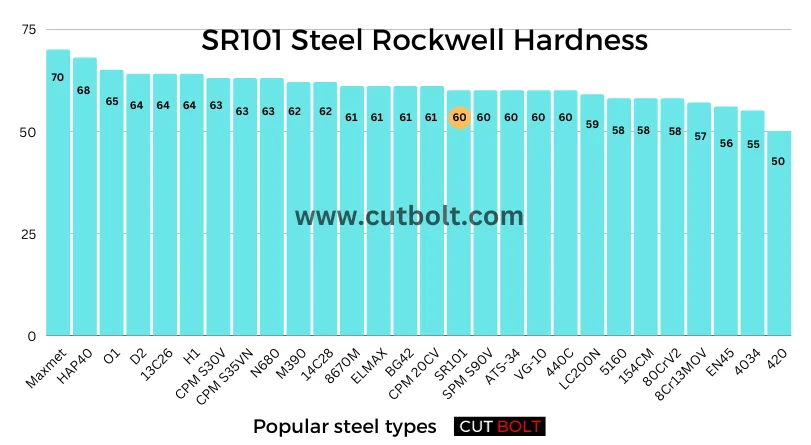
Is SR101 stainless steel?
No, unfortunately, it is not. SR101 steel is neither rust-free nor stainless steel. To be considered rust-free, it would need a chromium content of at least 10.5-13% dissolved in the austenite or ferrite, depending on the definition (see here). It is not a stainless steel because its sulfur and phosphorus content (so-called iron companion) exceeds 0.025%.
Properties of SR101 steel
According to the chemical composition and hardness of SR101 steel, this material offers the following properties and characteristics:
- Edge retention: SR101 steel’s edge retention is good. With a maximum hardness of 60 HRC, and a carbon content of 1%, this steel offers good hardness and therefore good edge retention. There are steels that still (significantly) exceed this, but not in this quality and price segment.
- Corrosion resistance: With a chromium content of only 1.45%, SR101 steel is far from being rust-free. In other words, its corrosion resistance is low and it will rust in humid environments.
- Wear resistance: SR101 steel is highly wear-resistant and also very resistant to damage from “abuse” which is common in the field.
- Sharpness: There is a rule, the golden rule of sharpness. And this rule says, “The harder the steel, the harder it is to sharpen.” Since SR101 is a hard steel, it is not so easy to sharpen. However, it is also not as difficult to sharpen as some premium steel. As a rule of thumb, anything below 60 HRC is comparatively easy to sharpen.
- Machinability: The same applies to machinability. The softer a steel the better it is to drill and grind.
- Toughness: The toughness of SR101 steel is good thanks to the mixture of carbon and chromium.
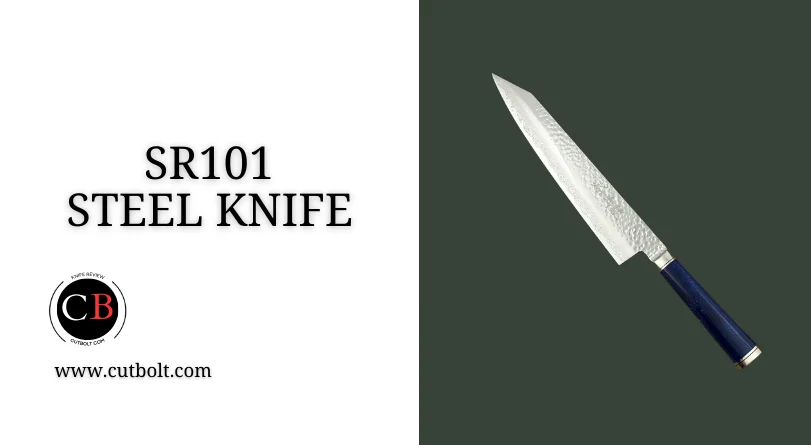
Is SR101 a good knife steel?
The answer is clearly YES! Is it the best? NO! Leaving aside the fact that there is no such thing as the “best”, I think SR101 is an excellent choice for a survival knife, EDC knife or batoning knife. However, I would not recommend it for wet environments, here you will not be happy with SR101 steel due to its low corrosion resistance.
In other words, it is not for those who are constantly exposed to water and moisture: Cooks, hunters, fishermen, divers and so on – keep your hands off.
If you want to be on the safe side in terms of corrosion technology, you’d better look around at high chrome steels such as 420HC, or, if your wallet allows it, take a look at the higher-priced up to the premium steels.
For absolute corrosion resistance, H1 and LC200N spontaneously come to mind, but these might be too much of a good thing for most people. For all others: always clean and a drop of oil on the blade!
Related: What is Maxmet steel and how good it is for knives?
SR101 Steel equivalents
As mentioned earlier, SR101 is a modified steel that is very similar to 52100 steel. Both steels have good hardness, good strength and low corrosion resistance (the 52100 steel is much harder than the SR-101 though).
How does SR101 stack up against 1095?
In case anyone gets the idea of comparing SR101 steel to 1095 – SR101 in my opinion has better edge retention, better toughness, both have low corrosion resistance. However, 1095 is a bit easier to sharpen, which is especially beneficial in the field.
Conclusion: How good is SR101 steel for knives?
Time to recap, “what is SR101 steel, how good is it, composition and hardness” I have answered them all.
SR101 itself is not a very well-known steel. It is proprietary, a modification of AISI 52100 from the knife manufacturer BUSSE COMBAT. As a descendant, it is logically related to it.
SR101 steel is hard, tough, and its wear resistance is good. If you are thinking about getting an SR101 knife from BUSSE, you should know that it is not stainless. “Not stainless” means this steel needs care. It also makes it unsuitable for humid environments. You certainly won’t have fun using this steel in wet environments for long periods.
If you need a knife for this, you should look for knives with a high chromium content (13% and more).

